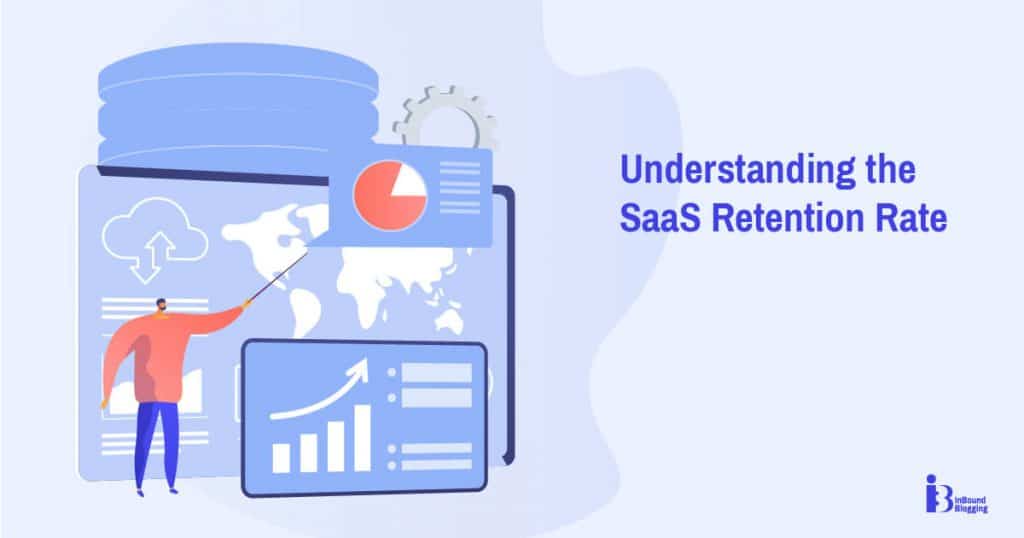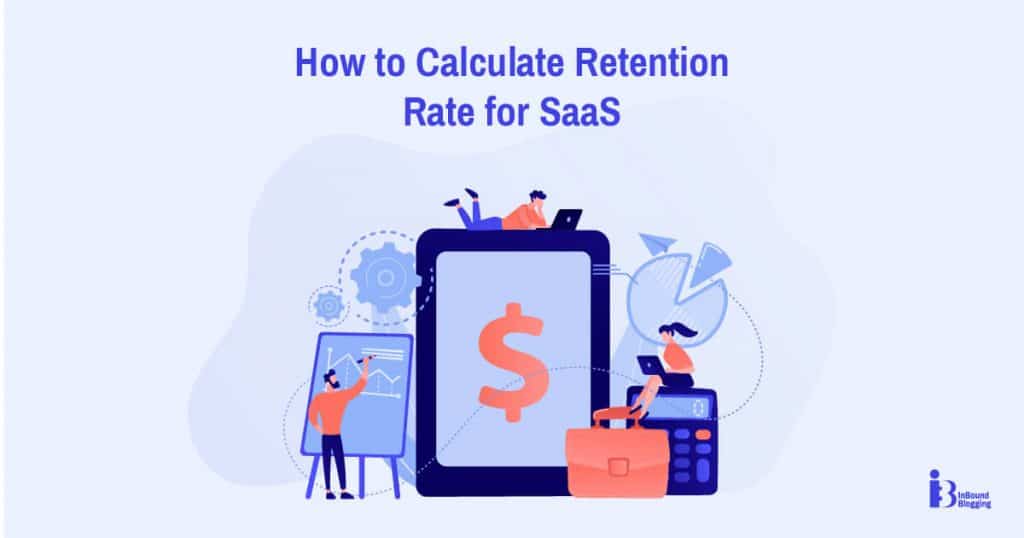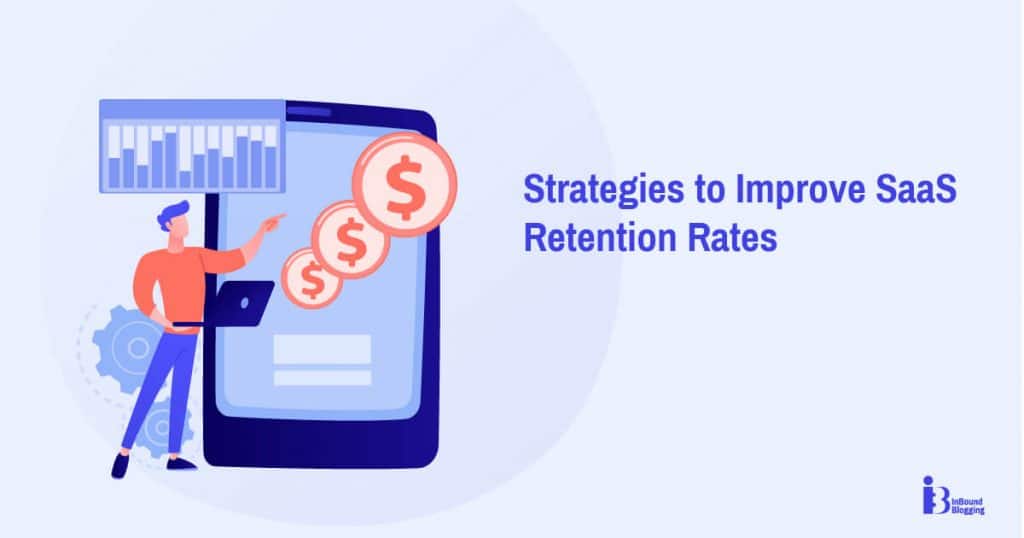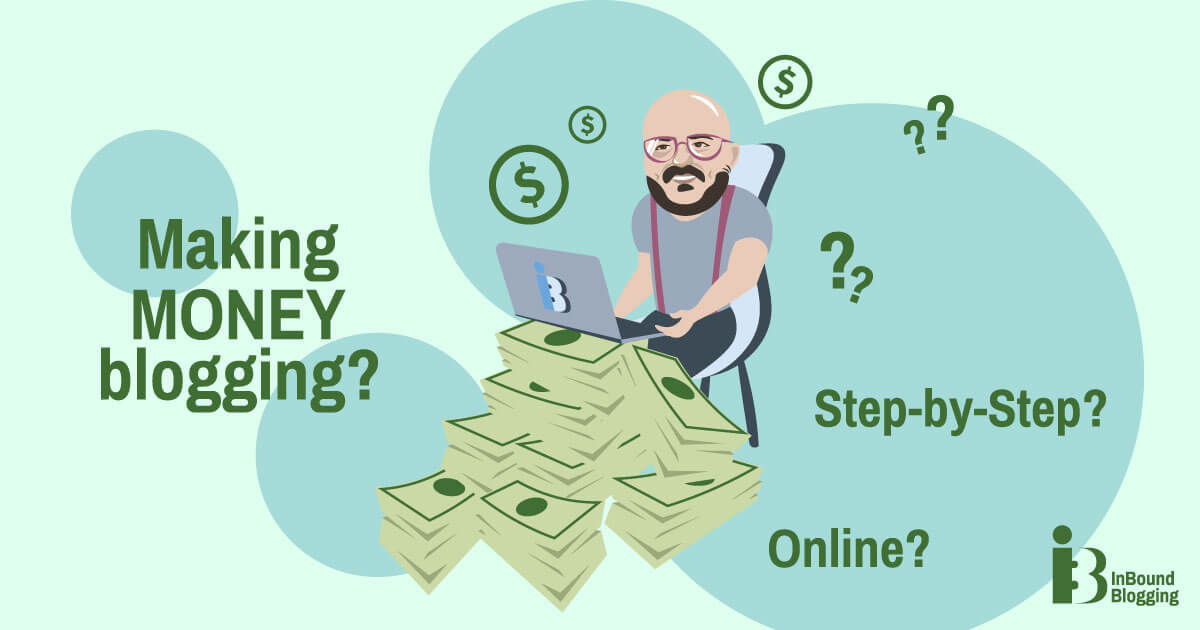Are you wondering why your SaaS business isn’t growing as expected? It might be due to one overlooked factor—retention rate.
This blog post will clarify what a SaaS retention rate is and why it’s so crucial for your software company’s success.
With the strategies we unveil for improving this key metric, you’ll be on your way to keeping customers loyal and securing recurring revenue.
So stay tuned—growth awaits!
Retention Rate for SaaS [Key Takeaways]
- The SaaS retention rate counts how many customers choose your SaaS product over and over again.
- Some general retention benchmarks suggest that the average retention rate for SaaS is between 92% and 97%.
- Metrics, such as active users and renewal rates, help you comprehend user retention rate.
- Optimizing retention rates makes a business grow faster. Both customer and MRR (monthly recurring revenue) rates matter in this case.
- Calculating these two rates is easy with basic math. Don’t make mistakes like counting canceled memberships as churn.
- To improve customer retention, provide great service from the start and ongoing.
- Important indicators to monitor each month include customer churn, MRR churn, CLV (customer lifetime value), and NPS (net promoter score) for high growth outcomes.
Understanding the SaaS Retention Rate

In the SaaS business model, the user retention rate is a highly important metric that indicates how effectively a company can maintain its customer base over time. In other words, it benchmarks how many customers continue to use your software after the initial usage period.
The next section will delve into retention rate definitions and highlight different measuring indicators.
So let’s get down to it.
Definition of retention rate
In general, the retention rate is the percentage of customers who keep their subscriptions. It shows how many customers stay with a SaaS product and the loyalty of users over time. New customers are not counted.
A good rate means more people are satisfied with your offering and want to keep using your software product for longer.
So here comes the next logical question: What is a good retention rate for SaaS?
Some trustworthy resources claim that the average SaaS retention rate is around 92%–97%.
Indicators of user retention rate
The user retention rate shows how well a company keeps its customers over time. It is very important for SaaS businesses. There are clear signs you can look at to see this:
- Number of active users: the number of people who use the SaaS platform for the current period.
- Customer loyalty: Those who stay with the service for a long time show strong user retention.
- Repeat purchase rate: If customers keep buying, they seem happy with the service.
- Renewal rate: This tells you how many customers sign on for more time after their plan ends.
- Revenue growth rate: Getting more money from existing customers means you are keeping them well.
- Aha moment: The point when a customer sees real value in the product leads to higher retention.
The Importance of SaaS Retention Rate
Understanding the significance of the SaaS retention rate is necessary, as it measures customer loyalty and satisfaction, determines recurring revenue for your business, and helps shape strategies to maintain a high retention rate.
Evaluating different types of retention rates, such as customer retention rate, SaaS net retention rate, SaaS gross retention rate, and MRR retention rate, can provide in-depth insights into various aspects of the customer journey, helping businesses optimize services based on these valuable metrics.
Boosting the SaaS retention rate improves the customer experience and ensures a healthier ROI with a low churn rate, which translates into sustainable business growth over time.
However, it’s important not only to measure your company’s retention rate but also to compare it with industry benchmarks. The SaaS retention rate benchmark is the average or expected retention rate in the field.
In 2023, the median net retention across all SaaS companies was 102%, while the median gross retention was 91%, according to SaaS-Capital.com. A curious fact is that these numbers were the same in 2022.
Why user retention rate matters
Retaining old users costs less than acquiring new ones. Moreover, a high user retention rate means steady income. A steady income helps the firm plan and grow with ease. On top of that, profits can grow fast if more customers stay around longer.
Interesting fact: Company revenue could rise by 25% to 95% if firms increase their customer retention by just 5%.
Types of retention rates: customer and MRR
There are two types of retention rates that SaaS businesses need to monitor:
- Customer Retention Rate: It measures how many customers stay with your service over time. A high customer retention rate shows strong customer loyalty.
- MRR Retention Rate: The monthly recurring revenue (MRR) retention rate informs you about the steady monthly income from existing customers who stick around. This revenue assists SaaS businesses in growing without constantly acquiring new users.
How to Calculate Retention Rate for SaaS

Let’s learn the formulas for calculating customer and MRR retention rates:
Customer retention rate formula
To calculate the customer retention rate, follow these steps:
- Get the number of customers at the beginning of the period.
- Count your customers at the end of the period. Take away any new users gained during that time.
- Divide the end-period users by the number of starting customers, and then multiply by 100. This shows how many of your first customers are still with you as a percentage.
For example, if you start with 1000 customers and end up with 900 (don’t include any newcomers), your retention rate is 90% [(900/1000)*100].
In fact, 90% is the average customer retention rate (CRR) in the SaaS industry.
MRR retention rate formula
The MRR retention rate formula shows how much money you make from your present users each month. To calculate it, use the following steps:
- Take the MRR at the start of a period and remove churned cash during that time.
- Then, divide that end-period MRR by the total MRR at the beginning.
- Multiply it by 100 to get a percentage.
Let’s assume your initial MRR is $100,000. If you have $95,000 MRR at the end of the month, then your MRR retention rate is 95% [(95,000/100,000)*100].
This number gives you a view of your business’s health and highlights where revenue is recognised, allowing SaaS companies to identify areas of growth or potential loss effectively.
Common Mistakes in SaaS Retention Rate Calculation
Understanding the pitfalls of calculating retention rate is critical for businesses aiming for consistent growth and success through reliable data analysis.
Let’s see what to pay close attention to:
Not calculating user retention rate along with MRR retention
Ignoring the nuances of customer and MRR retention can cause significant errors in calculating SaaS retention rates. Failure to align user retention rate with MRR retention often results in an inaccurate evaluation of business health.
By looking at both amounts, you get to know your gains and losses better. It can show problems holding customers or keeping income steady.
Ignoring one of these rates means missing out on critical information for fixing issues or making better decisions. A high user retention rate without a good MRR could mean problems with pricing or offering value to users. A strong MRR but a poor user hold may point towards weak customer satisfaction or customer support lapses.
To avoid this mistake, always check both your customer and revenue holdings side by side!
Counting canceled memberships as churn
A common mistake is counting canceled memberships as churn, which could inflate your churn data, skewing insights and strategies based on these flawed numbers.
However, some people see canceled memberships as churn. This is a mistake. It’s churn when a customer stops using your service for good. A canceled membership might mean the same thing, but not always.
Sometimes, customers cancel for short-term reasons. They may come back later on when they are ready or have more money to spend. Counting these customers as churn can give you wrong numbers and information about the SaaS retention rate and MRR retention rate.
Strategies to Improve SaaS Retention Rates

In order to improve SaaS retention rates, companies can implement strategic approaches such as:
- Personalized onboarding programs that meet customers’ needs and expectations.
- Secondary onboarding for existing users who may need further assistance or training.
- In-app self-service support available 24/7 to solve customer queries instantly.
- Implementing churn or exit surveys to understand the reasons behind customer turnover.
Personalized onboarding
Make sure each new user feels special. This is what personalized onboarding does. It is the first step a user takes with your software that sets the tone for the entire interaction. So, it’s vital to make these moments count.
Personalized onboarding uses details about the user to give them a unique start. It shows immediately that you care about each customer’s needs and want them to get the most out of your software.
This kind of care can lead users to stay with your service longer, adding more money to your company.
“When it comes to ramping up SaaS retention rates and fostering loyalty, it really boils down to keeping your ear to the ground and being tuned in to your customer’s evolving needs. Imagine walking into your favorite local cafe, where they remember just how you like your coffee. That’s the vibe we’re aiming for—a personalized experience that makes customers feel seen and valued. It’s all about fostering a relationship where they know their input is not just welcomed but genuinely appreciated and can influence changes. A stellar customer support team that goes above and beyond? That’s just the cherry on top!” — Sudhir Khatwani, Founder, The Money Mongers
Secondary onboarding
The user doesn’t stop learning after the first onboarding session. Secondary onboarding comes next. This stage helps new users see other things your product or service can do. That’s how they become premium users or even speak for you.
Secondary onboarding is not just a set of steps for the user to follow. It also offers more guidance and details about other handy features that are not part of the basic functions a particular customer has already been using. Sending personalized emails to your clients is a great way to nurture and inform them about the other functionalities of your product.
It shows them there’s always something more for them to gain from your software service.
In-app self-service support
You can use in-app self-service support to keep your users happy. This tool helps the user find answers for themselves. It is located inside your app or software. The user does not need to leave what they are doing to get help.
They simply click on the support tool and look for a solution. Contented users often stay longer with your app, so make sure this option works well.
“To maintain customer trust, SaaS software must meet the standards of enterprise-readiness, as customers rely on your software to provide a reliable infrastructure so they can focus on using the software to accomplish their work. Customers also seek innovative licensing options and software extensions that can be customized to meet their specific enterprise requirements.” — Paul Ross, Group Product Manager, Esri
Churn or exit surveys
Churn or exit surveys are a good way to make your business better. They help you find out why customers left your service. Knowing this can help with fixing problems and making the product better for all users. Some companies that keep a lot of their customers use these types of surveys to improve their services.
Such surveys help boost customers’ satisfaction, which keeps them around longer. Using churn or exit surveys as a tool for understanding customers is an effective retention strategy in the long run.
Key SaaS Customer Retention Metrics to Track
To effectively manage and improve your SaaS customer retention rate, it’s crucial to monitor key metrics such as customer churn, MRR churn, customer lifetime value (CLV), and net promoter score (NPS).
Let’s delve into the importance of each metric in the next section.
Customer churn
Customer churn is a big worry for SaaS businesses. In simple words, it means a customer stops using your service. A high monthly churn rate (more than 7%) shows that many users are quitting the service. This is bad news, as it can lead to less income for the business.
One scary fact is that SaaS firms with a 20% annual growth rate have a 92% chance of failing, according to McKinsey. This shows how important it is not just to sign up new users but also to keep them. So, if there’s one thing you should focus on, it’s stopping customer churn and keeping people on good terms with your service.
MRR churn
MRR churn is money lost. It tells you how much regular cash goes out the door each month. MRR helps SaaS businesses track their steady earnings from subscriptions.
With a basic math formula, you can figure out the churn. Let’s follow the steps:
- First, get the total cash at the start of the month from all those who cancel or downsize in that same month.
- Then, divide this by the total cash at the start of the month from all subscribers. Multiply this number by 100 to find the MRR churn rate as a percent.
Businesses don’t want high rates here. Lower rates mean losing less money and keeping more customers happy. So, knowing your MRR churn is very important to help fight off losses.
“Implementing customer success programs, onboarding strategies, and loyalty initiatives, such as referral programs or exclusive access to new features, can strengthen customer relationships. Moreover, businesses should focus on setting realistic expectations, ensuring transparent pricing models, and demonstrating the tangible benefits and ROI of their SaaS offering. This holistic approach can help optimize retention metrics, drive sustainable growth, and minimize churn in the competitive SaaS landscape.” — Vaibhav Kakkar, CEO, Digital Web Solutions
Customer lifetime value (CLV)
Customer lifetime value, or CLV, is extremely important in the SaaS world. It shows how much value a customer adds to your business over time. Think of it this way: customers who stay longer and buy more will bring your company more value and cash.
So, keeping a watchful eye on CLV helps you evaluate the long-haul satisfaction of your customers. The higher the CLV, the healthier your business is likely to be.
Customer acquisition cost (CAC)
CAC, i.e., customer acquisition cost, refers to the cost of acquiring new customers for a business. This includes money spent on ads, wages, bonuses, etc. A lower CAC means that each customer costs less to get, which is better for the business.
Using fewer funds to gain customers can help SaaS companies save money in the long run.
“I recommend looking at customer acquisition cost, customer lifetime value, and active versus inactive accounts—which will show you whether or not you’re making money from each customer.
Once you know where your business stands in terms of customer retention and what needs to be done to improve it, you can set up a plan for improvement. For example, if your company has a high CAC (customer acquisition cost) but a low CLV (customer lifetime value), then it may make sense to focus on increasing CLV while reducing CAC through things like better advertising or more effective sales staff training programs.” — Will Yang, Head of Growth & Customer Success, Instrumentl
Net promoter score (NPS)
NPS is the figure that tells you how pleased users are with your product. It takes account of all new and old customers. Happy clients mean high NPS. SaaS companies use this metric to find out if they match their target market’s needs. A low net promoter score indicates that the company needs to make adjustments to its business strategies.
Conclusion
The SaaS retention rate serves as a barometer of how well your product resonates with your customers and directly impacts your company’s success. With the right strategies, planning, and frequent evaluations, you’re set on a path to fostering customer loyalty and securing a steady stream of recurring revenue.
Explosive growth awaits on the other side of retention rate optimization. So why not start today?
Read my article on SaaS product marketing strategies to discover proven techniques for boosting visibility and keeping users engaged.
FAQ
What does user retention rate mean in SaaS metrics?
User retention rate is a key SaaS metric. It measures how many customers keep using the service over time, helping to track revenue churn and customer churn rate.
How can I improve my SaaS business’s customer retention rates?
You can improve your SaaS business’s customer retention rates by providing personal service, demonstrating the value of your product, creating loyalty programs, and optimizing your onboarding process for new users.
Can offering different subscription plans improve user retention?
Yes. Offering different plans at various price points can not only draw in new users but also encourage them during the different stages of a customer lifecycle.
Is there a way to know if my company’s user engagement metrics are up to par with others in the industry?
Yes. You can leverage tools for benchmarking engagement metrics like average revenue per account (ARPA), net revenue retention (NRR), and gross margin percent against industry standards. An example of such a tool is Mixpanel.
How effective is digital advertising in improving the SaaS retention rate?
Proper use of strategies, such as A/B testing, could scale up the effectiveness of digital advertisements. They must be combined with personalized welcome screens to encourage repeated interaction from customers, thereby increasing existing customer revenue growth rates.
How helpful are surveys for optimizing my SaaS business?
Surveys are a valuable tool for gathering insights, improving user satisfaction, reducing churn, and driving growth in your SaaS business. When used strategically and consistently, surveys can help you make informed decisions that lead to a more successful and user-centric product.
In-app marketing tools like Userpilot have product-analytics features that are very useful to understand users’ feedback through microsurveys and NPS surveys, ultimately guiding ways to secure a better subscription-based pricing model resulting in a high gross margin percentage.



